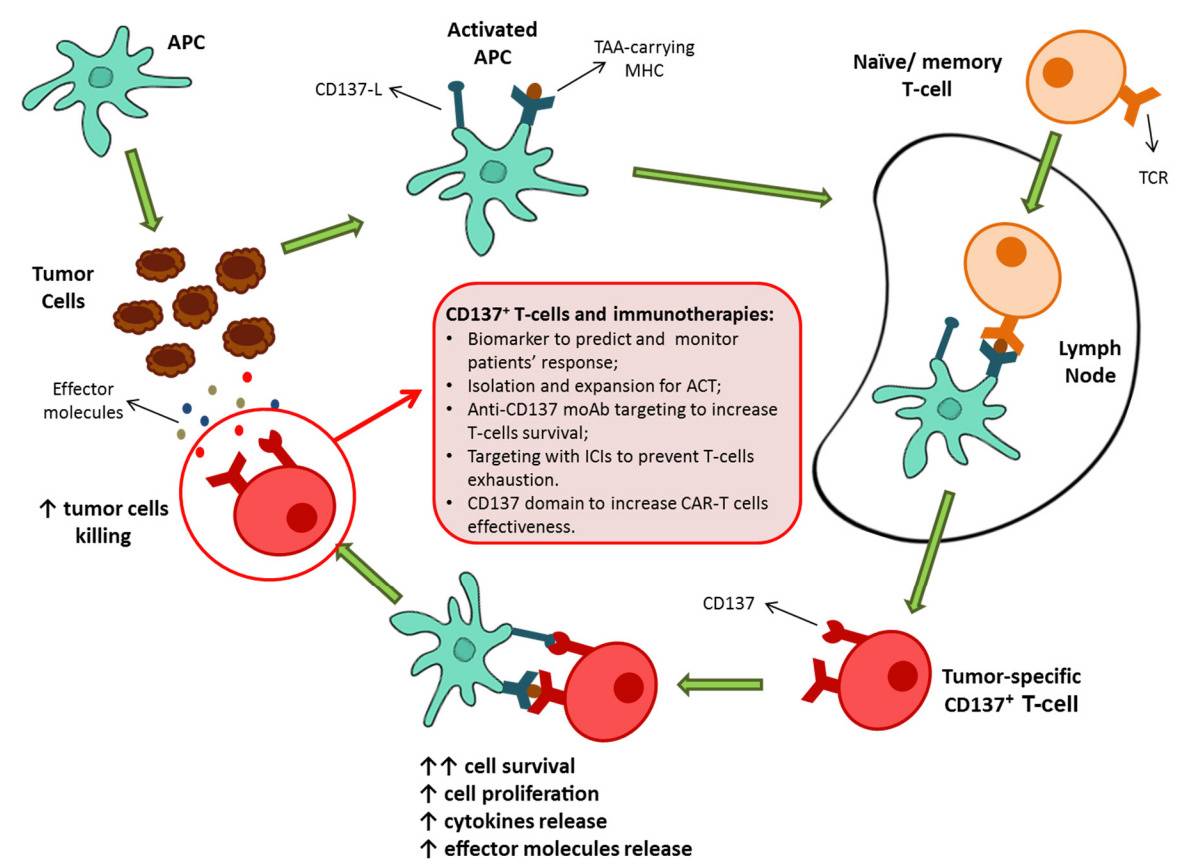Hi-Affi™ Humanized CD137 Immune Checkpoint Knockin Mouse Model
Although considerable development has been made in discovering how tumors evade immune surveillance, efficient measures to counter these mechanisms have not kept pace with the advances in designing effective strategies. To this end, CD137 is currently of great interest to oncologist as a co-stimulatory immune checkpoint for anti-tumor immunotherapy. Furthermore, studies on mouse models indicated that it can augment immune activity to eliminate tumors. Creative Biolabs, who always focus on the research highlight of onco-immunology studies, has successfully established an array of well-characterized Hi-Affi™ “humanized” animal models and can provide you this innovative humanized CD137 immune checkpoint knock-in mice with extensive experience and legendary transgenic techniques.
CD137 Immune Checkpoint Pathway
CD137 is one of the tumor necrosis factor (TNF) receptor family member, which is also known as TNFRSF9 and 4-1BB. CD137 is expressed on activated T cells, while to a larger extent on CD8+ than on CD4+ T cells. Additionally, CD137 is also found on dendritic cells, B cells, follicular dendritic cells, natural killer cells, granulocytes and cells of blood vessel walls at sites of inflammation. Activation with several agonists, such as cytokines (IL-2, IL-4), polyclonal activators (Con A and PHA), and cell surface molecules (anti-CD3 and anti-CD28), and promoters of Ca2+ induction and PKC activity (ionomycin and phorbol myristate acetate), can further enhance the expression of CD137.
 Fig. 1 Schematic representation of CD137+ T-cell activation. 1
Fig. 1 Schematic representation of CD137+ T-cell activation. 1
Plenty of studies have shown that CD137 is also expressed on a wide range of tumor cells, including, H446, H460, H1299, and SPC-A-1. Distinguishingly, constitutive and functional expression of CD137 was also noted on leukemic cell lines, and in some cases, such expression has shown to suppress T cell activation, and thus to be regarded as a potential anti-tumor agent. Like certain members of the TNFR superfamily, 4-1BB and 4-1BBL also exist in soluble forms in the sera of patients suffering from certain clinical conditions, including cancer. There are reports to suggest that soluble 4-1BBL possesses activation potential.
The most significant activity of CD137 is the costimulatory activity of activated T cells. Crosslinking of CD137 with agonistic antibodies or with its natural ligand CD137 is supposed to deliver a powerful costimulatory signal to T cells, which synergizes with the primary TCR signal in enhancing cell proliferation and inducing cytokine secretion (e.g. IL-2 and IFN-g). The inducible expression pattern of CD137L was similar to that of B7-1 and B7-2 in the CD28:B7 pathway. It has been known that the protein tyrosine kinase p56lck can physically associate with CD137.
Development of Humanized CD137 Immune Checkpoint Knock-In Mice
Above all, CD137, an activation-induced costimulatory immune checkpoint molecule, is certainly considered as an important regulator of immune responses. Targeting CD137 or its natural ligand 4-1BBL has significant implications in many clinical settings, especially cancer. Further research indicated that CD137 mediated anti-tumor effects are related to its ability in inducing activation of cytotoxic T lymphocytes (CTL), and among others, high amounts of IFN-γ. As a world leader in the industry of drug discovery, Creative Biolabs has developed a Hi-Affi™ platform to provide a set of well-established human immune checkpoint KI mouse models, including CD137. A team of senior scientists focused on humanized mouse models can support you to evaluate novel anti-tumor agents in a timely and cost-effective method. What's more, we also established comprehensive in vitro immunomodulation assessment service using various approaches. Please feel free to contact us for more details.
Creative Biolabs also offers other Humanized Mouse Models you may be interested in:
Reference
- Ugolini, Alessio, and Marianna Nuti. "CD137+ T-Cells: Protagonists of the Immunotherapy Revolution." Cancers vol. 13,3 456. 26 Jan. 2021, doi:10.3390/cancers13030456. Distributed under Open Access license CC BY 4.0, without modification.
For Research Use Only.
